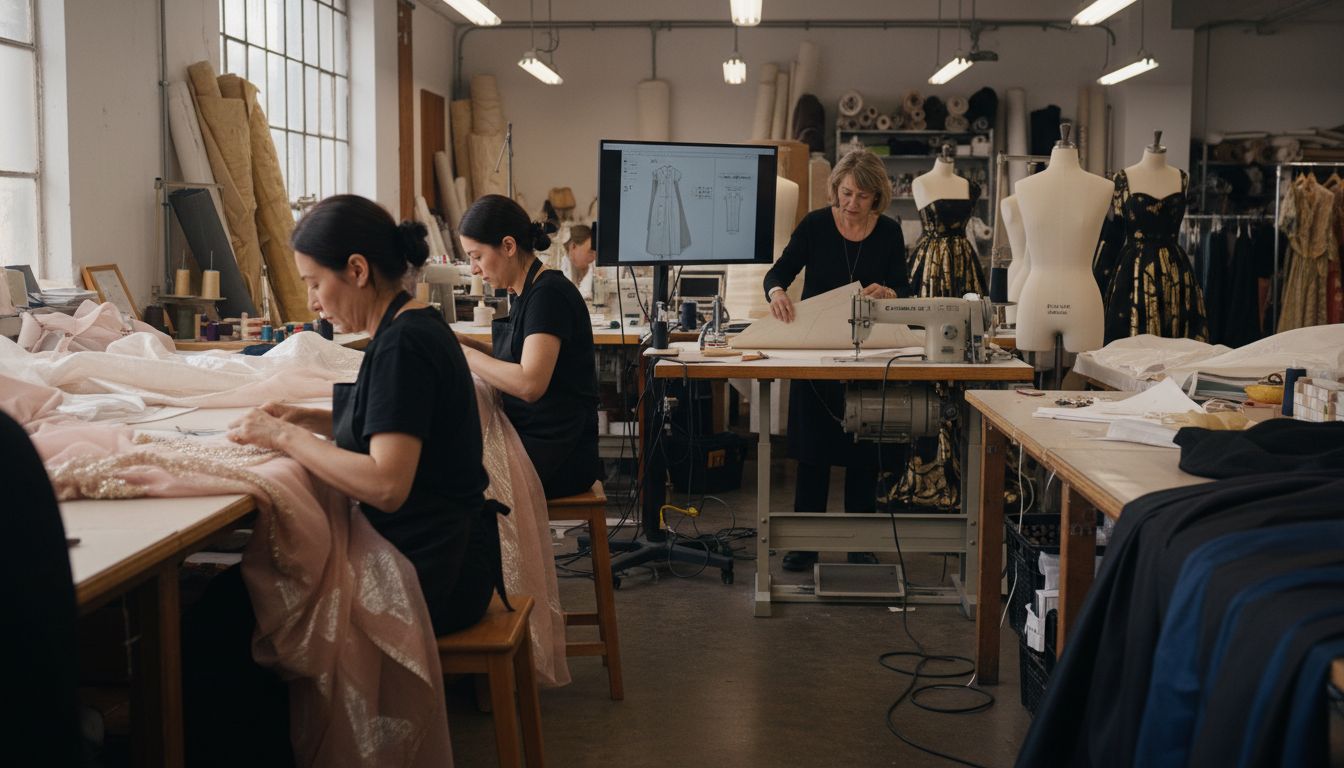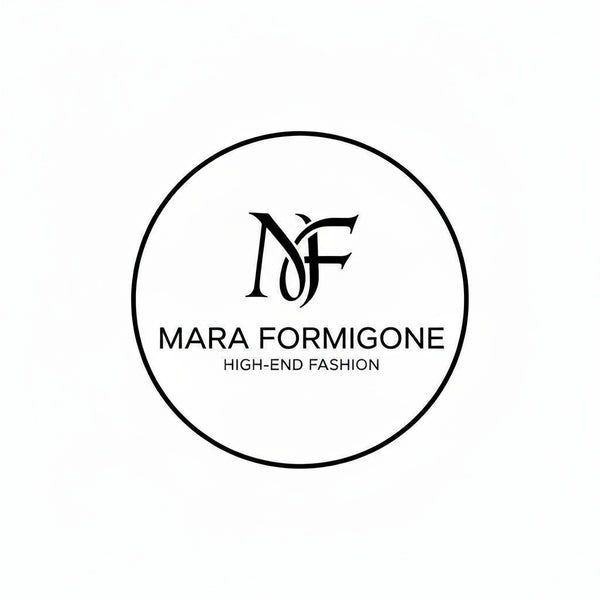Did you know that some haute couture dresses require more than 700 hours of handcrafting? Fashion houses have long been symbols of artistry, status, and innovation, shaping the way society views luxury and personal expression. Their influence stretches from exclusive Parisian salons to global runways, blending tradition with modern trends and pushing the boundaries of what clothing can represent in our everyday lives.
Table of Contents
- Defining A Fashion House And Its Origins
- Types Of Fashion Houses: Couture Vs. Ready-To-Wear
- Core Roles And Operations Within Fashion Houses
- Iconic Fashion Houses And Their Impact
- Fashion Houses Vs. Other Fashion Entities
Key Takeaways
| Point | Details |
|---|---|
| Definition of Fashion House | A fashion house is a prestigious entity dedicated to high-end fashion design, either in haute couture or ready-to-wear categories. |
| Types of Fashion Houses | Haute couture emphasizes bespoke, handcrafted designs, while ready-to-wear focuses on accessible, mass-produced styles. |
| Core Roles | Fashion houses require collaboration among various roles, including creative direction, design, and production to achieve artistic innovation and commercial success. |
| Cultural Impact | Iconic fashion houses shape trends and cultural conversations through distinctive aesthetics and innovative designs that transcend mere clothing production. |
Defining a Fashion House and Its Origins
A fashion house represents a prestigious commercial enterprise exclusively dedicated to creating and producing high-end fashion designs. According to Wikipedia, a fashion house is “a commercial company associated exclusively with fashion, either ready-to-wear, bespoke, or haute couture.”
Historically, fashion houses emerged as sophisticated design studios where skilled artisans and designers crafted exclusive clothing collections for wealthy clientele. As early as 1870, establishments like the House of Thurn pioneered the concept of haute couture, creating made-to-order fashions specifically tailored for affluent customers. These early fashion houses were more than simple clothing manufacturers - they were artistic institutions that transformed fabric and design into wearable art.
The core characteristics of a fashion house typically include:
- Unique design aesthetic and signature style
- Custom or ready-to-wear clothing collections
- High-quality craftsmanship and tailoring
- Seasonal fashion shows and runway presentations
- Limited production runs of exclusive designs
Modern fashion houses have evolved from their historical roots, now encompassing comprehensive luxury brands that extend beyond clothing into accessories, fragrances, and lifestyle products.
 While maintaining their commitment to exceptional design and quality, contemporary fashion houses blend traditional craftsmanship with innovative techniques and global market strategies.
While maintaining their commitment to exceptional design and quality, contemporary fashion houses blend traditional craftsmanship with innovative techniques and global market strategies.
Types of Fashion Houses: Couture vs. Ready-to-Wear
Fashion houses operate in two primary categories that distinguish their design and production approaches: haute couture and ready-to-wear (prêt-à-porter). According to FashionUnited, these categories represent fundamentally different approaches to fashion design and manufacturing, with haute couture referring to “high-quality, custom-made clothing produced in limited quantities” while ready-to-wear represents “mass-produced, standardized clothing intended for wide distribution.”
Haute couture represents the pinnacle of fashion design, characterized by exceptional craftsmanship and personalized creation. These exclusive fashion houses produce meticulously handcrafted garments tailored specifically for individual clients, often requiring multiple fittings and involving hundreds of hours of intricate handwork. Each piece is essentially a wearable work of art, with prices that can range from tens of thousands to hundreds of thousands of dollars. Designers like Chanel, Dior, and Givenchy maintain dedicated haute couture divisions that showcase their most sophisticated and imaginative designs.
In contrast, ready-to-wear fashion houses create clothing designed to fit most body types with minimal alterations. As Mood Fabrics explains, these collections are “designed to fit most body types without major alterations” and are typically presented during fashion weeks worldwide. Ready-to-wear lines offer several key advantages:
- More accessible pricing
- Faster production timelines
- Standardized sizing
- Wider market appeal
- Quicker trend implementation
While both types of fashion houses share a commitment to design excellence, they serve distinctly different market segments. Haute couture caters to an ultra-exclusive clientele seeking unparalleled personalization, while ready-to-wear fashion houses democratize high-end design, making sophisticated styles available to a broader audience. This diversity ensures that fashion remains both an art form and an accessible form of personal expression.
Here’s a comparison of haute couture and ready-to-wear fashion houses:
| Feature | Haute Couture | Ready-to-Wear |
|---|---|---|
| Production Volume | Extremely limited | Mass-produced |
| Customization | Fully custom, client-specific | Standard sizes, minimal |
| Craftsmanship | Handcrafted, intricate details | Machine-made, efficient |
| Clientele | Ultra-exclusive, wealthy | Broad, global audience |
| Price Range | $10,000 and above | Accessible to more budgets |
| Speed to Market | Slow, months to complete | Fast, seasonal collections |
| Artistic Innovation | Maximal, experimental | Trend-driven, adaptable |
Core Roles and Operations Within Fashion Houses
Fashion houses are complex organizational structures with multiple critical roles that collaborate to transform creative vision into stunning collections. Leadership roles are particularly crucial, as seen in examples like Akris, where a creative director and CEO work in tandem to guide the brand’s strategic and artistic direction.
The core operational roles within a fashion house typically include:
- Creative Director: Responsible for overall artistic vision and design strategy
- Head Designer: Translates creative concepts into actual garment designs
- Pattern Makers: Develop precise technical blueprints for clothing construction
- Textile Specialists: Select and source high-quality fabrics and materials
- Production Managers: Oversee manufacturing processes and quality control
- Marketing and Communications Team: Develop brand positioning and runway presentation strategies
Historical fashion houses like Maison Schiaparelli demonstrate how artistic collaboration can elevate a brand’s reputation. Elsa Schiaparelli, for instance, was renowned for her innovative collaborations with artists, which transformed her fashion house from a mere clothing manufacturer into a cultural institution that blended fashion with avant-garde artistic expression.
Modern fashion houses operate as intricate ecosystems where creativity, technical skill, and business acumen must seamlessly intersect. Each team member plays a vital role in translating abstract design concepts into wearable art, managing everything from initial sketch to final runway presentation. The most successful fashion houses maintain a delicate balance between artistic innovation and commercial viability, ensuring that their unique vision resonates with discerning customers while remaining economically sustainable.
Iconic Fashion Houses and Their Impact
Throughout fashion history, certain fashion houses have transcended mere clothing production to become global cultural institutions that shape artistic expression and style. Armani, for instance, represents a quintessential example of an Italian luxury fashion house that has revolutionized design across multiple product categories, from haute couture to ready-to-wear and luxury accessories.
Some of the most transformative fashion houses have distinguished themselves through radical artistic innovation. Maison Schiaparelli stands as a prime example, with founder Elsa Schiaparelli pioneering avant-garde designs that blurred boundaries between fashion and art. Her groundbreaking collaborations with Surrealist artists like Salvador Dalí fundamentally challenged traditional fashion paradigms, introducing imaginative and provocative design concepts that continue to inspire designers decades later.
The most iconic fashion houses share several defining characteristics:
- Distinctive and recognizable design aesthetic
- Consistent innovation and trend-setting capabilities
- Strong brand identity and heritage
- Global recognition and cultural influence
- Ability to adapt while maintaining core design principles
Modern fashion houses have evolved from exclusive design studios to complex global brands that influence not just clothing, but broader cultural conversations about art, identity, and self-expression. These institutions represent more than commercial enterprises - they are living historical archives that document social change, artistic movements, and the continuous reimagining of personal style through carefully crafted design narratives.
Fashion Houses vs. Other Fashion Entities
Fashion houses represent a unique tier in the fashion ecosystem, distinctly different from other clothing production models. According to Mood Fabrics, they differ fundamentally from fast fashion brands by “producing haute couture and ready-to-wear collections” rather than rapidly generating trendy clothing at minimal cost.
The key distinctions between fashion houses and other fashion entities can be categorized across several critical dimensions. Fashion United highlights that while fashion houses create “custom-made, high-quality garments,” other entities operate with dramatically different priorities and production methodologies:
Comparative Categories:
- Fashion Houses: Emphasize artistic design, craftsmanship, and exclusivity
- Fast Fashion Brands: Prioritize rapid trend replication and low-cost production
- Designer Labels: Focus on branded aesthetic but with less artisanal complexity
- Mass Market Retailers: Concentrate on volume and affordability
- Boutique Designers: Offer limited runs with personalized approaches
Ultimately, fashion houses distinguish themselves through an unwavering commitment to creative integrity, technical excellence, and a holistic approach to design that transcends mere clothing production. While other fashion entities may chase trends or prioritize economic efficiency, fashion houses remain dedicated to transforming fabric and form into wearable art that reflects complex cultural and artistic narratives.

Discover the Essence of a True Fashion House With Mara Formigone
Understanding the exclusive world of a fashion house reveals the deep artistry and craftsmanship behind every luxurious garment. If you appreciate the unique blend of haute couture and ready-to-wear collections, you know how important it is to find pieces that speak to your personal style and stand the test of time. Many struggle to connect with brands that truly embody this balance of innovation, quality, and cultural significance. At Mara Formigone you can explore a curated selection of high-end fashion that reflects the spirit of iconic fashion houses.

Experience the difference that a genuine fashion house makes by browsing exquisitely crafted dresses, accessories, and footwear that bring the artistry and exclusivity you desire directly to you. Visit Mara Formigone now to embrace the perfect fusion of tradition and modern luxury. Don’t miss the chance to elevate your wardrobe with designs inspired by the world’s most celebrated fashion houses. Start your journey today and own pieces that truly define style and sophistication.
Frequently Asked Questions
What defines a fashion house?
A fashion house is a prestigious company that specializes in creating and producing high-end fashion designs, including ready-to-wear, bespoke, and haute couture collections.
What are the differences between haute couture and ready-to-wear fashion houses?
Haute couture involves high-quality, custom-made garments produced in limited quantities, while ready-to-wear focuses on mass-produced clothing designed for broader distribution, generally with standardized sizing and more accessible pricing.
What roles are essential in a fashion house?
Core roles within a fashion house include the Creative Director, Head Designer, Pattern Makers, Textile Specialists, Production Managers, and Marketing and Communications Teams, all collaborating to bring a fashion collection to life.
How have fashion houses evolved over time?
Fashion houses have transformed from exclusive design studios focused solely on clothing production to comprehensive luxury brands that offer a wide range of products, including accessories and fragrances, while adapting to modern market strategies and consumer demands.

